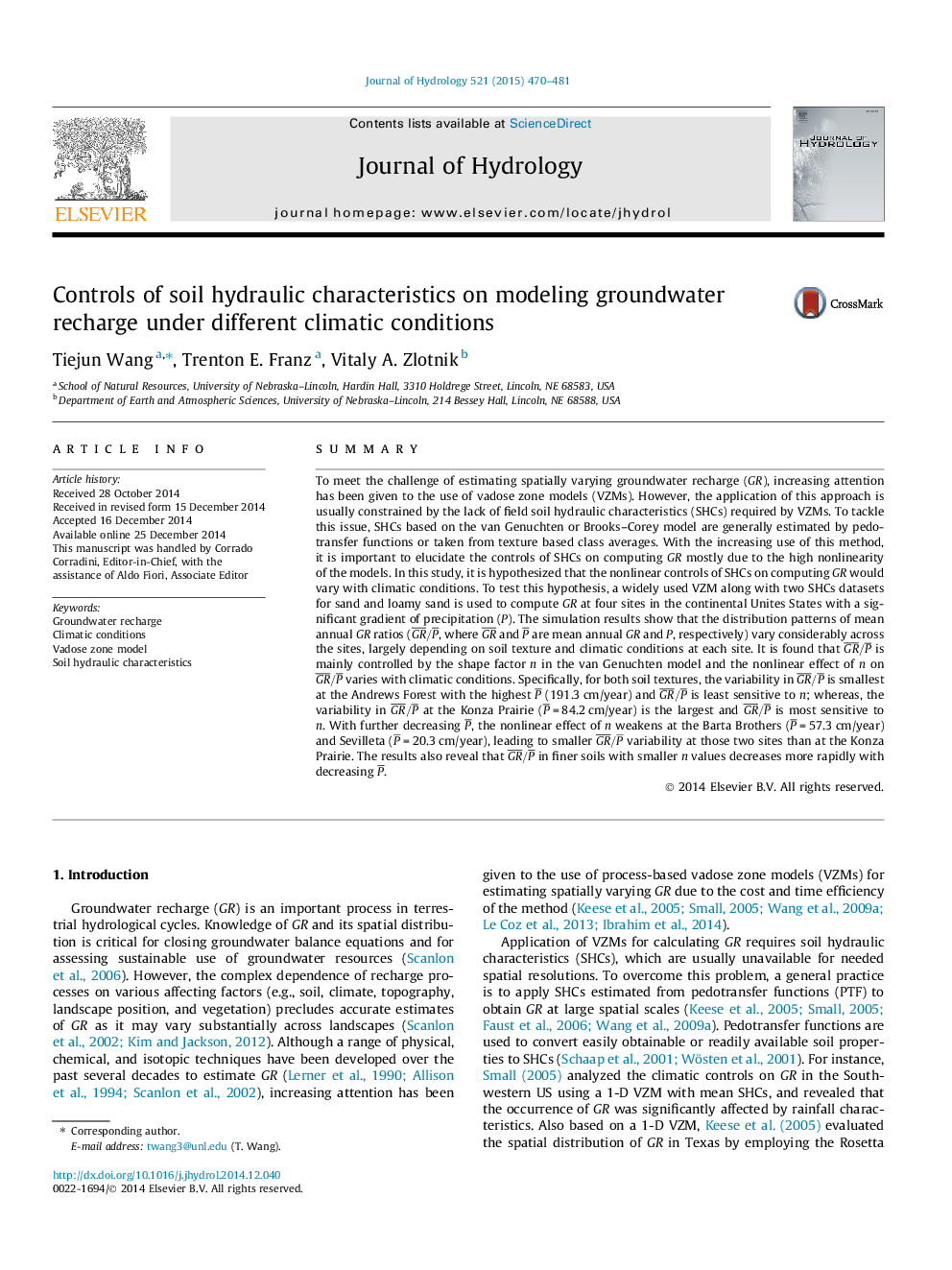| کد مقاله | کد نشریه | سال انتشار | مقاله انگلیسی | نسخه تمام متن |
|---|---|---|---|---|
| 6411611 | 1629929 | 2015 | 12 صفحه PDF | دانلود رایگان |
- Groundwater recharge (GR) is affected by soil hydraulic characteristics (SHCs).
- Controls of SHCs on GR distributions vary with climatic conditions and soil texture.
- Distributions of GR are highly sensitive to the parameter n in SHCs.
- GR in finer soils with smaller n decreases more rapidly with decreasing precipitation.
SummaryTo meet the challenge of estimating spatially varying groundwater recharge (GR), increasing attention has been given to the use of vadose zone models (VZMs). However, the application of this approach is usually constrained by the lack of field soil hydraulic characteristics (SHCs) required by VZMs. To tackle this issue, SHCs based on the van Genuchten or Brooks-Corey model are generally estimated by pedotransfer functions or taken from texture based class averages. With the increasing use of this method, it is important to elucidate the controls of SHCs on computing GR mostly due to the high nonlinearity of the models. In this study, it is hypothesized that the nonlinear controls of SHCs on computing GR would vary with climatic conditions. To test this hypothesis, a widely used VZM along with two SHCs datasets for sand and loamy sand is used to compute GR at four sites in the continental Unites States with a significant gradient of precipitation (P). The simulation results show that the distribution patterns of mean annual GR ratios (GRâ¾/Pâ¾, where GRâ¾ and Pâ¾ are mean annual GR and P, respectively) vary considerably across the sites, largely depending on soil texture and climatic conditions at each site. It is found that GRâ¾/Pâ¾ is mainly controlled by the shape factor n in the van Genuchten model and the nonlinear effect of n on GRâ¾/Pâ¾ varies with climatic conditions. Specifically, for both soil textures, the variability in GRâ¾/Pâ¾ is smallest at the Andrews Forest with the highest Pâ¾ (191.3 cm/year) and GRâ¾/Pâ¾ is least sensitive to n; whereas, the variability in GRâ¾/Pâ¾ at the Konza Prairie (Pâ¾Â = 84.2 cm/year) is the largest and GRâ¾/Pâ¾ is most sensitive to n. With further decreasing Pâ¾, the nonlinear effect of n weakens at the Barta Brothers (Pâ¾Â = 57.3 cm/year) and Sevilleta (Pâ¾Â = 20.3 cm/year), leading to smaller GRâ¾/Pâ¾ variability at those two sites than at the Konza Prairie. The results also reveal that GRâ¾/Pâ¾ in finer soils with smaller n values decreases more rapidly with decreasing Pâ¾.
Journal: Journal of Hydrology - Volume 521, February 2015, Pages 470-481
